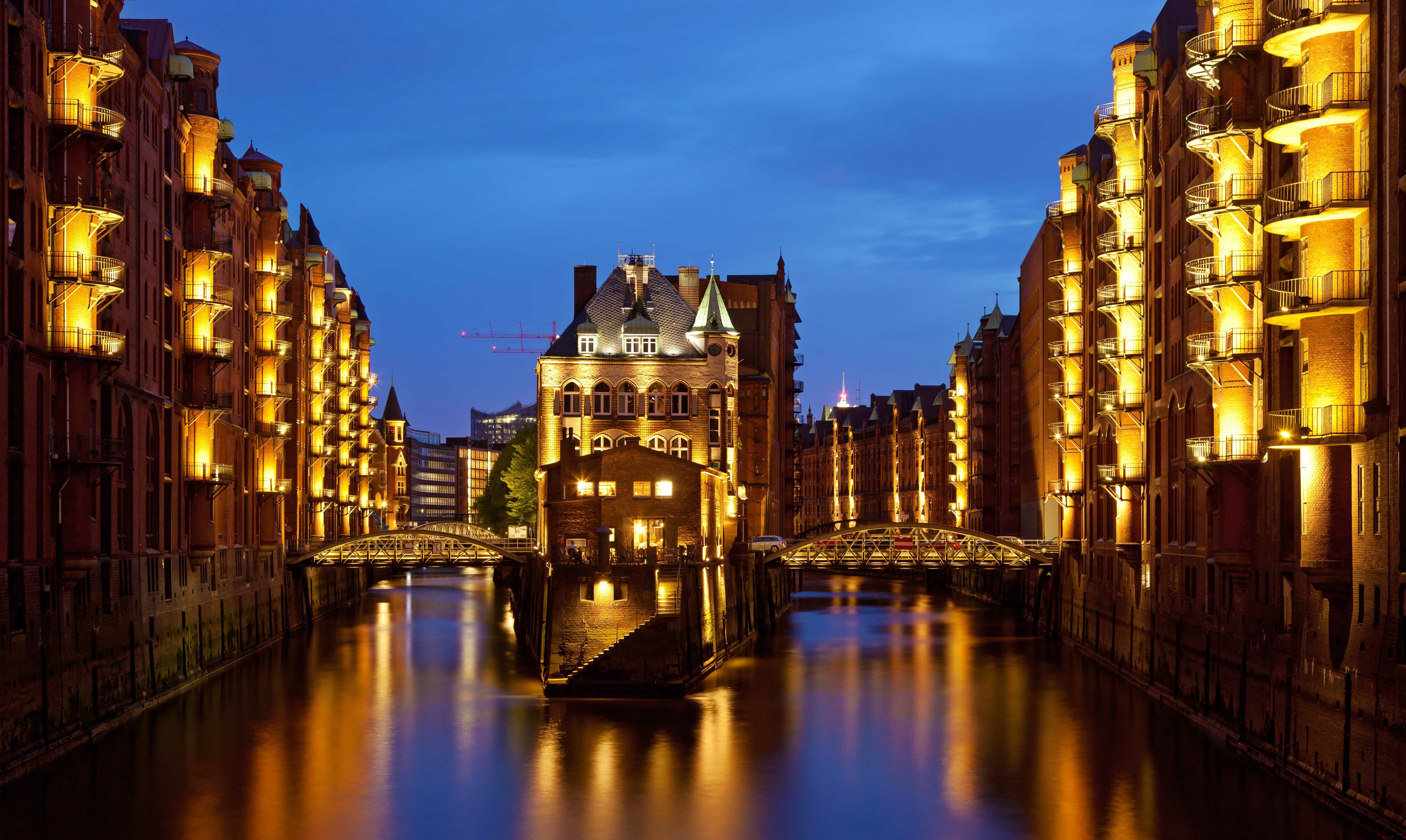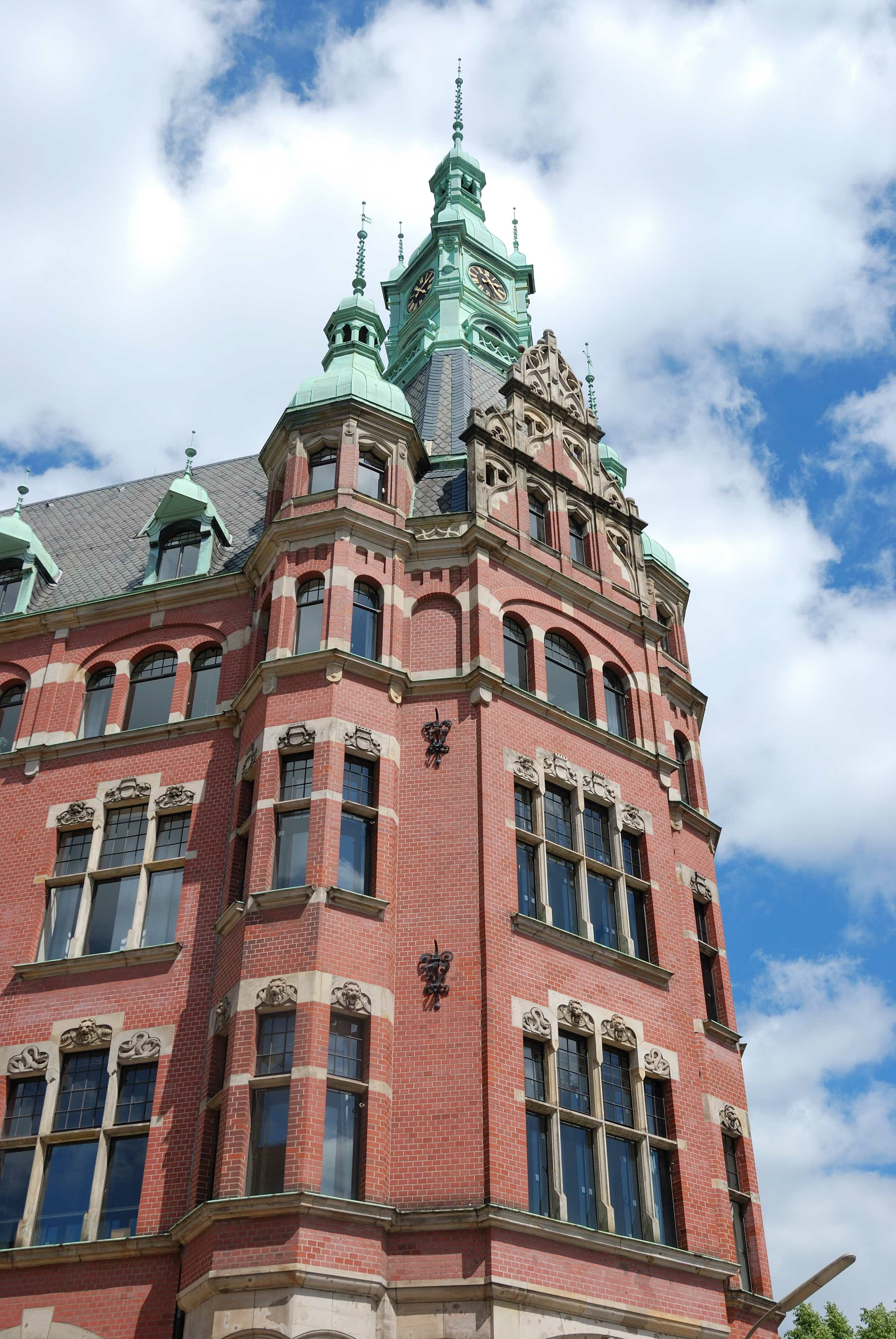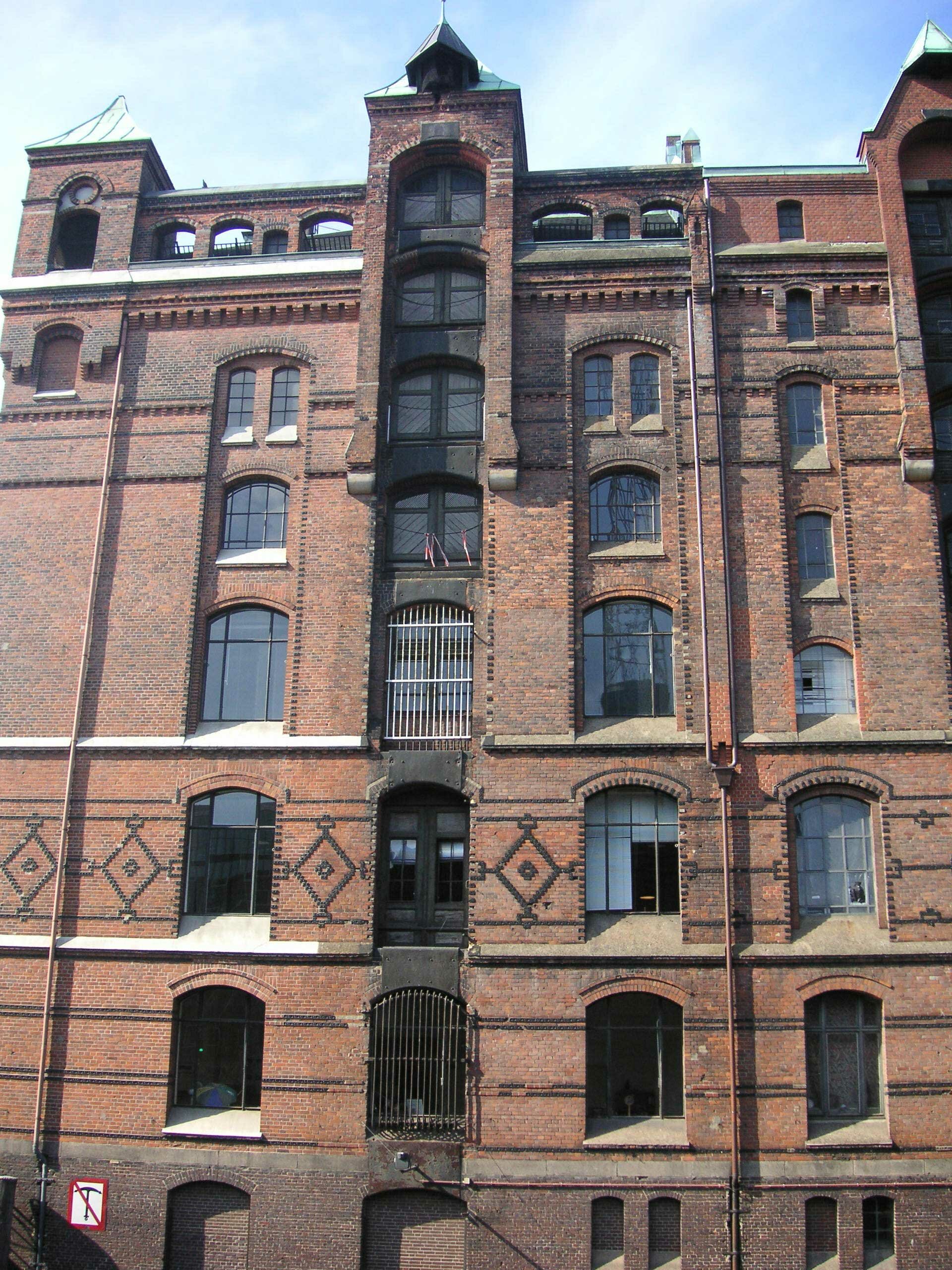-
Speicherstadt
,What`s here?History and museums,
The Speicherstadt (German pronunciation: ˈʃpaɪ̯çɐˌʃtat, literally: 'City of Warehouses', meaning warehouse district) in Hamburg, Germany is the largest warehouse district in the world where the buildings stand on timber-pile foundations, oak logs, in this particular case. It is located in the port of Hamburg—within the HafenCity quarter—and was built from 1883 to 1927.
The district was built as a free zone to transfer goods without paying customs. As of 2009 the district and the surrounding area is under redevelopment. As the first site in Hamburg, it has been awarded the status of UNESCO World Heritage Site on 5 July 2015.
Geography
The Speicherstadt is located in the port of Hamburg and 1.5 km (0.93 mi) long and pervaded by loading canals (Low German: Fleets).
History
Since 1815, the independent and sovereign city of Hamburg was a member of the German Confederation—the association of Central European states created by the Congress of Vienna—but not member of the German Customs Union. With the establishment of the German Empire in 1871, Hamburg could not be a customs free zone and part of the German Empire. Due to treaties of 1888 Hamburg was part of the German customs zone and a free port was established.
In 1883 the demolition of the Kehrwieder area began and more than 20,000 people needed to be relocated. From 1885 to 1888 the first part was built and managed by the Freihafen-Lagerhaus-Gesellschaft (the predecessor of the Hamburger Hafen und Logistik AG). In 1991 it was listed as a protected Hamburg heritage site, and since 2008, it has been part of the HafenCity quarter. In an attempt to revitalize the inner city area, the Hamburg government initiated the development of the HafenCity area, for example with the construction of the Elbe Philharmonic Hall.
In World War II, Allied bombing destroyed around 50% of the Speicherstadt. Some of the structures completely destroyed were not rebuilt. They are now the location of the Hanseatic Trade Center.
Architecture
The warehouses were built with different support structures, but Andreas Meyer created a Neo-Gothic red-brick outer layer with little towers, alcoves, and glazed terra cotta ornaments. The warehouses are multi-storey buildings with entrances from water and land. One of the oldest warehouses is the Kaispeicher B of the International Maritime Museum.
Use
The Speicherstadt is a tourist attraction in Hamburg. There are several museums like the Deutsches Zollmuseum (German Customs Museum), Miniatur Wunderland (a model railway), the Hamburg Dungeon, and the Afghan Museum.
The buildings are also used as warehouses. As of 2005, the companies in the Speicherstadt handled one-third of the world's carpet production, and other goods as cocoa, coffee, tea, spices, maritime equipment, and electronic goods.
Media related to Speicherstadt at Wikimedia Commons
Source: https://en.wikipedia.org/wiki/Speicherstadt
Text is available under Creative Commons Attribution-ShareAlike 3.0
Latest posts
 If you like, you will definitely enjoy:Speicherstadt
If you like, you will definitely enjoy:Speicherstadt

 Thomas Wolf, www.foto-tw.de - Own">
Thomas Wolf, www.foto-tw.de - Own">
 Alchemist-hp (
Alchemist-hp ( Mbdortmund - Own">
Mbdortmund - Own">
 Wolfgang Meinhart, Hamburg - Own">
Wolfgang Meinhart, Hamburg - Own">
 Holger.Ellgaard - Own">
Holger.Ellgaard - Own">







